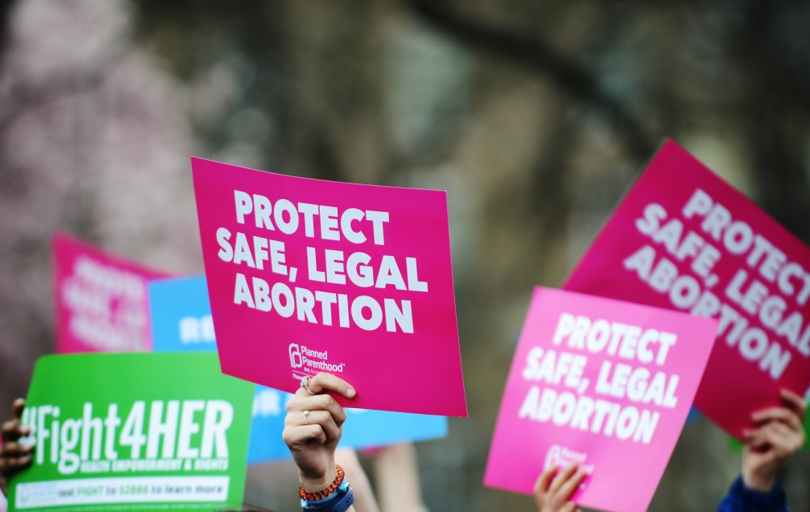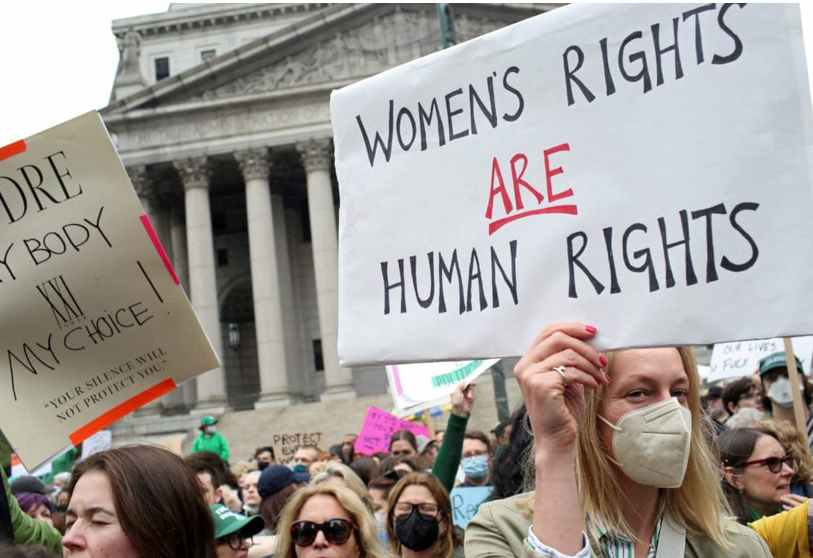
What Is Abortion Law In India?
Until the 1960s, Section 312 of the Indian Penal Code made abortion illegal in India, and a woman might face three years in prison and/or a fine (IPC). In the middle of the 1960s, the government established the Shantilal Shah Committee and ordered the group, led by Dr Shantilal Shah, to investigate the issue of abortions and determine if India need legislation on the subject. In August 1971, on the recommendations of the Shantilal Shah Committee, the Lok Sabha and Rajya Sabha introduced and passed a medical termination bill.
The Medical Termination of Pregnancy (MTP) Act, of 1971 went into effect in India on April 1, 1972, except in the state of Jammu & Kashmir.
In addition, Section 312 of the Indian Penal Code of 1860 criminalizes voluntarily “creating miscarriage,” even if the pregnant lady consents to the miscarriage unless the miscarriage is performed to save the woman’s life.
This means that anyone, including a medical practitioner, could be prosecuted for an abortion, including the woman herself.
When the Act was introduced, policymakers had two goals- To control the population resulting from unintended pregnancies, and to reduce the increasing maternal mortality and morbidity due to illegal, unsafe abortions.
- Under the 2021 amendment Act, medical termination of pregnancy is permitted if it is based on medical opinion and fulfil at least one of the following reasons;
- If the pregnancy would involve a risk to the pregnant woman’s life.
- If pregnancy results in any injury to the woman’s physical or mental health.
- If an unborn child suffers from a serious physical or mental abnormality.
The Decision Of The Supreme Court
It took a broad view of the issue and interpreted MTP Act 2021 as the word “partner” rather than “spouse,” suggesting that the law was not intended to be limited to only marriages.
It further said that the petitioner could not be denied the benefits of the statute because she was unmarried, as this would go against the “object and spirit” of the Act.
Furthermore, the bench asked the director of the All-India Institute of Medical Sciences (AIIMS) to constitute a medical board of two doctors to evaluate the lady (as required by the MTP Act) to assess whether terminating the pregnancy was safe and did not endanger the mother’s life.
Evolution Of Medical Termination Of Pregnancy Act 1971
The Medical Termination of Pregnancy (MTP) Act was enacted in 1971 to prevent maternal mortality due to unsafe abortions.
A single physician’s opinion was required for abortions performed up to 12 weeks after fertilization.
Through an amendment in 2003, new rules were introduced in the MTP Act to allow the use of misoprostol (a newly discovered abortion medicine) for medical termination of pregnancy for up to seven weeks.
This law is an exception to sections 312 and 313 of the Indian Penal Code (IPC) and establishes the conditions under which a medical abortion may be performed.
Under Section 312 of the Indian Penal Code, a person who “voluntarily induces a pregnant woman to miscarry” is punishable by up to three years in prison or a fine, or both, unless it was done in good faith to save the pregnant woman’s life.
This clause effectively criminalizes unrestricted abortion in India. In accordance with Section 313 of the IPC, a person who induces a miscarriage without the pregnant woman’s agreement, regardless of whether she is in the advanced stages of her pregnancy, shall be punished with life in prison or a prison term that could reach 10 years, as well as a fine.
Methods Of Abortion
The choice of the method of abortion depends on the stage of the pregnancy and other patient factors,
Methods like-
1. Early Medication Abortion Method (Early pregnancy, up to 7-9 weeks gestation)
- A woman in very early pregnancy may have the option of an abortion that uses medicine instead of a surgical abortion. The woman must see a healthcare provider to get the medicine.
2. Suction Curettage (Early pregnancy 6-14 weeks gestation)
- The vagina is cleaned with liquid soap. A shot to numb the cervix is given, then the cervix is dilated, and a tube attached to a suction machine is put into a uterus. The uterus is then emptied by suction. Next, a tool called a curette is used to scrape the wall of the uterus this removes any products of pregnancy (fetus and afterbirth) that remain in the uterus.
3. Dilation and Evacuation (Early pregnancy 12-24 weeks gestation)
- This is the most common method used after 12 weeks of pregnancy. The vagina is cleaned with liquid soap. The cervix is usually prepared by putting natural sponges called laminaria into the opening of the cervix. They soak up moisture and swell. This causes the slow stretching and opening of the cervix over a period of hours. In some cases, other methods may be used during the procedure to stretch and open the cervix.
4. Induction of labor (Advanced Pregnancy)
Emptying the uterus by labor induction is usually done in the hospital. First, the cervix must be prepared by making it softer. Several methods can be used. Laminaria may be placed into the opening of the cervix. They soak up moisture and swell. This causes the slow stretching and opening of the cervix over a period of hours. Or prostaglandin medications may be put into the vagina for several hours.
After the cervix is softened, labor is started (induced). Several medicines such as prostaglandin or oxytocin can be used to start contractions or labor may be started by injecting medicine through the abdominal and uterine walls into the “bag of waters” (amniotic sac). In this case, a shot to numb the skin is given. Most women who are induced deliver in 10-20 hours.
5. Hysterotomy/ Cesarean Delivery (After 24 weeks gestation)
In rare cases where the induction method fails or cannot be used, a surgical method called “hysterotomy” must be used. “Hysterotomy” means to cut open the uterus. It is like a Cesarean delivery and has the same risks.
After the abortion, a woman with Rh-negative blood will be given a shot of immune globulin. This prevents blood type problems in future pregnancies. Antibiotics may be ordered to prevent infection of the uterus. Other medicines may be used to reduce bleeding.
Important Provision Of Mtp Amendment Act,2021
The original MTP Act was updated more comprehensively in 2020, and the revised law became effective in September 2021.
The recent amendment raised the maximum gestational age at which a woman may obtain a medical abortion from 20 weeks under the MTP Act of 1971 to 24 weeks.
The new upper limit can only be applied in specific cases,
- Abortion up to 20 weeks of gestational age can be done after the opinion of a single registered medical practitioner.
- From 20 weeks up to 24 weeks, the opinion of two registered medical practitioners is required.
Grounds For Termination Of Pregnancy

- Further, for pregnancies between 20 and 24 weeks, rules specified seven categories of women who would be eligible for seeking termination under section 3B of rules prescribed under the MTP Act,
- Survivors of sexual assault or rape or incest
- Minors
- Change of marital status during the ongoing pregnancy (widowhood and divorce)
- Women with physical disabilities [major disability as per criteria laid down under the Rights of Persons with Disabilities Act, 2016
- Mentally ill women including mental retardation,
- The foetal malformation has a substantial risk of being incompatible with life or if the child is born it may suffer from such physical or mental abnormalities to be seriously handicapped, and
- Women with pregnancy in humanitarian settings or disasters or emergencies may be declared by the Government.
Laws In The Case Of Unmarried Women
According to the provisions of the updated 2021 MTP Act, unmarried women may also have an abortion under the condition, as the requirement for a spouse’s consent is not included.
However, if the woman is a minor, parental consent is essential.
Protection Of Privacy Of Women

The MTP act has provisions that safeguard the right to privacy of a woman seeking an abortion.
According to Section 5A of the MTP Act, registered medical professionals may only “disclose the name and other identifying information of a woman whose pregnancy has been terminated” to a lawfully permitted individual
If this medical staff violates the woman’s privacy in any way, they might face up to a year in jail, pay a fine, or both.
Judicial Intervention In Cases Of Abortion
In the landmark 2017 Right to Privacy judgment in Justice K.S. Puttaswamy v. Union of India and others, the Supreme Court ruled that a pregnant person’s decision on whether to continue a pregnancy is part of that person’s right to privacy and, consequently, the right to life and personal liberty under Article 21 of the Indian Constitution.
In February 2022, the Calcutta High Court let a 37-year-old lady who was 34 weeks pregnant and had been diagnosed with an incurable spinal disease have a medical abortion.
After the State Medical Board denied the woman’s application for MTP, the Court authorized this.
This ruling permitted abortions at the country’s most advanced gestational age to date.
Pregnancy Beyond 24 Weeks
In circumstances where the pregnancy has proceeded beyond 24 weeks, abortion is performed due to foetal abnormalities.
The MTP Act requires a four-member Medical Board in each state to approve authority for this type of abortion.
What Are The Concerns?
Cases of Unsafe Abortion- According to the United Nations Population Fund (UNFPA State)’s World Population Report 2022, unsafe abortions are the third biggest cause of maternal mortality in India, and around 8 women die each day from causes associated with unsafe abortions.
To terminate undesired pregnancies, unmarried women and those from poor households are forced to employ risky or illegal methods.
Shortage of Medical Experts in rural areas- As of 2015, according to a report published in the Lancet in 2018, 15,6 million abortions were performed annually in India.
The MTP Act stipulates that only doctors specializing in gynecology or obstetrics may perform abortions.
In rural India, there is a 70% deficiency in obstetrician-gynecologists, according to the 2019-20 Rural Health Statistics report from the Ministry of Health and Family Welfare.
Illicit Abortions leading to Maternal Mortality- As the legislation prohibits unrestricted abortion, it compels women to seek dangerous, illegal abortions, resulting in maternal death.
What Section Of The Indian Penal Code Deals With Abortion?
In IPC there are sections for miscarriage.
Section 312 of IPC- This clause effectively criminalizes unrestricted abortion in India. A person who “willfully causes a pregnant lady to miscarry” is subject to punishment under this clause. He/she may face up to three years in prison or a fine, or both unless the act was performed in good faith to save the life of the pregnant lady.
Section 313 of IPC- Under the requirements of this section, a person who induces a miscarriage without the pregnant woman’s agreement, regardless of the stage of her pregnancy, shall be punished with life in prison or a prison term of up to 10 years, as well as a fine.
Problems With The MTP Act Being Implemented
Critics have pointed out that because the MTP Act prohibits planned abortion, it compels women to undergo illegal abortions in unhygienic and dangerous environments.
Many of India’s 80,000 unsafe and illegal abortions every year result in maternal death, according to data.
Rural India has a 70% shortage of obstetricians and gynecologists, according to the Rural Health Statistics 2019–20 report from the Ministry of Health and Family Welfare.
Policies For Safe Abortion Care
- As unsafe and illegal abortions contribute significantly to MMR, the Government of India’s policies and objectives are centred on expanding public and private sector access to and availability of CAC services. The policies under the National Population Policy (NPP) 2000 and the Reproductive and Child Health-II (RCH), National Health Mission (NHM) programme, within the framework of the MTP Act, 1971, are broadly categorized as:
1. Integrated strategic approach under RMNCH+A
To address unwanted pregnancies and abortions, RMNCH+A has established a strategic plan to incorporate early pregnancy detection, safe abortion care services, and contraceptive counselling/services.
2. Establishing CAC service delivery
CAC- women-centred approach
Abortion care services should be shifted from a medical procedure to a CAC approach centred on the woman. This requires the provision of safe and legal abortion services, considering a woman’s physical and mental health needs, her personal situation, and her capacity to access abortion services.
The three pillars of this strategy, which would facilitate the transition of abortion care to woman-centred care, are as follows:
Choice: Giving women the options to choose from the methods for the termination of pregnancy and post-abortion contraception.
Access: Making services available near her home.
Quality: Care provided with all the standard norms followed as under high quality of care, some of which are:
Provision of adequate time for counselling.
Maintenance of privacy and confidentiality.
Use of internationally recommended technologies, such as MVA, EVA and MMA.
Adherence to appropriate clinical standards and protocols for infection prevention, pain management, management of complications and other clinical components of care.
Provision of post-abortion contraceptive services, including emergency contraception.
Provision of reproductive and other health services, such as RTI/STIs and counselling on sexual behaviour.
Important steps taken to establish CAC services are:
- Provision of funds to states and union territories for the operation of CAC services, including medications and equipment, at healthcare facilities.
- Enhancing medical officers’ competence in secure MTP procedures.
- Training ANMs and ASHAs to counsel CAC in private and promote post-abortion care and contraception.
- Certification of private and NGO sector facilities through District Level Committees (DLCs).
- Active monitoring of CAC services in the public and private facilities through the Health Management Information System (HMIS) and quarterly reporting.
3. Generating Awareness
Activities that may be undertaken to create awareness of safe abortion care:
- State and district officers in the states should participate in CAC awareness training.
- Standard IEC/BCC materials on safe abortion were prepared centrally and distributed to the states.
- Funding to states and union territories for IEC planning through state PIPs.
- Orientation and training of ASHAs in community awareness-raising skills. Utilizing the current IEC tools for one-on-one communication with women would facilitate women’s access to services.
- CAC has also been integrated into the comprehensive RCH BCC campaign.
What Is Left To Be Changed?

Despite these benefits, the supreme court’s verdict is but the first step in the Indian women’s fight for reproductive and bodily autonomy. Thus, there is still considerable work to be completed. Notably, the amended statute and rules continue to systemically exclude a substantial portion of the LGBTQIA+ community, including transgender, non-binary, and gender-diverse individuals who were classified as female or intersex at birth, from India’s abortion laws and healthcare infrastructure.
For instance, the modified MTP ACT mentions cis-gender women, who face the most difficulty gaining access to healthcare, but does not specify the criteria that will apply to them. In fact, the judgment specifically uses the term “pregnant women,” leaving it unclear who is included and who is excluded.
It is essential to recognize that many individuals who do not identify as women can become pregnant and require access to safe abortions and sexual and reproductive health services. To make the framework more inclusive, “women” must be replaced with “person” in the MTP Act.
In addition to making the framework more inclusive, it is necessary to increase its visibility. Even if India’s reproductive laws are becoming more open, abortion is still stigmatized, especially in the lower levels of society where motherhood is continuously viewed through a moral lens. Therefore, family and sometimes even medical professionals hinder women from obtaining an abortion.
Conclusion
There is no doubt that India’s decision is commendable, especially considering that it comes at a time when sexual and reproductive rights are viewed as a rather contentious issue around the world, especially since the United States overturned the landmark Roe v. Wade decision, which granted constitutional validity to the right to abortion. Both India and the problem of women’s rights in the country are now on the path to growth.
The Medical Termination of Pregnancy Act, of 2021 offers women who seek access to safe abortions and those who want to lawfully terminate unplanned pregnancies some hope.
India must take greater measures to restrict and eventually eliminate the practice of illegal abortion. To allow abortions, the government must ensure that all professional standards and rules are adhered to in hospitals and other healthcare facilities across the nation.
Top 13 Interesting Facts About Abortion Law
Through the MTP Act amendment in 2021, the ceiling for abortions was raised to 24 weeks, but only for special categories of pregnant women such as rape or incest survivors, that too, with the approval of two registered doctors.
The status of the life of the foetus is still considered to be questionable as the law of our country has not come on to a conclusion regarding the status of the unborn child.
Abortion represents a woman’s right to choose and reproductive rights.
According to the lancet, 6 million abortions were conducted every year in India
The Ministry of Health and Family Welfare’s 2019-20 report indicates that there is a 70% shortage of obstetrician-gynecologists in India.
According to a study, every year more than 8,00,000 unsafe and illegal abortions are performed in India and many of them result in maternal mortality.
It is a crime to get an abortion because you or your family do not want a girl child.
The doctors have a duty to get your consent to perform the abortion.
No registered medical practitioner shall reveal the name and others of a woman whose pregnancy has been terminated.
The amended MTP Act does touch up on cis-gender women- who struggle the most in accessing healthcare but provides no clarity on specific rules that will apply to them.
Criminalizing abortion does not stop abortion, it just makes abortion less safe
It’s not just Cisgender women and girls who need abortions.
Access to safe abortion is a matter of human right.





